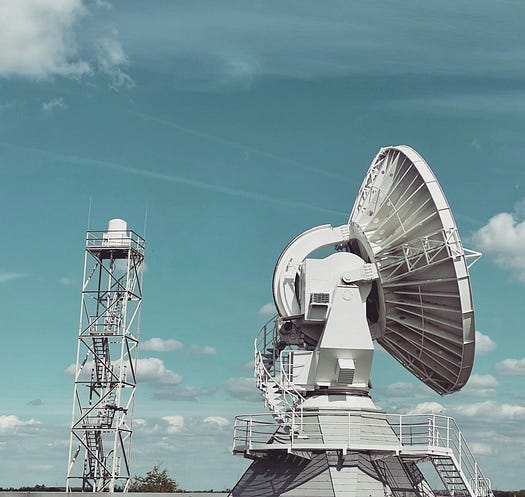The AI Revolution: Adaptive Radar
Radar, a cornerstone of modern technology, has been instrumental in fields from aviation to defense. Traditional radar systems, while effective, operate on fixed parameters, limiting their adaptability to changing environments. This is where artificial intelligence (AI) steps in. The integration of AI is ushering in a new era of radar technology: adaptive radar.
Imagine a radar system that can dynamically adjust its settings to counter electronic jamming, detect camouflaged targets, or even predict the behavior of moving objects. This is the promise of adaptive radar. By combining the precision of radar with the intelligence of AI, we’re unlocking a world of possibilities that were once confined to science fiction.
In the following sections, we’ll go deeper into the mechanics of adaptive radar, explore its diverse applications, and discuss the challenges and future directions of this groundbreaking technology.
Understanding Adaptive Radar

Adaptive radar is a revolutionary technology that goes beyond the limitations of traditional radar systems. Unlike their static counterparts, adaptive radars can dynamically adjust their parameters in real-time to optimize performance based on changing environmental conditions and target characteristics.
At the heart of an adaptive radar system is a complex interplay of hardware and software. This includes the radar transmitter, receiver, antenna, and signal processor. But what truly sets it apart is the integration of AI algorithms. These algorithms enable the radar to learn and adapt, making decisions about factors like transmit power, pulse repetition frequency, and beamforming based on the specific situation.
By incorporating AI, adaptive radar can enhance several key aspects of radar performance. For instance, it can improve target detection and tracking by filtering out noise and clutter, allowing for the identification of smaller or more distant objects. Additionally, AI can help classify targets, distinguishing between different types of aircraft, ships, or ground vehicles. This capability is crucial for applications like air traffic control and military surveillance.
AI Algorithms for Adaptive Radar

The intelligence behind adaptive radar lies in its algorithms. These are the mathematical instructions that enable the system to learn, adapt, and make decisions. A variety of AI techniques are being harnessed to revolutionize radar capabilities.
Machine learning is a cornerstone of adaptive radar. Algorithms like support vector machines and random forests can analyze vast amounts of radar data to identify patterns and trends. For instance, they can be trained to differentiate between different types of targets based on their radar signatures, improving target classification accuracy.
Deep learning, a subset of machine learning, is making significant strides in radar signal processing. Convolutional neural networks (CNNs) are particularly well-suited for tasks like image recognition and can be applied to radar data to detect and classify targets with remarkable precision. Recurrent neural networks (RNNs) are adept at handling sequential data, making them ideal for tracking moving targets and predicting their trajectories.
Another powerful AI technique is reinforcement learning. This approach involves training an algorithm to make decisions by rewarding desired behaviors and penalizing undesirable ones. In the context of radar, reinforcement learning can be used to optimize radar parameters, such as transmit power and pulse repetition frequency, in real-time based on the system’s performance.
Applications of Adaptive Radar

The potential applications of adaptive radar are vast and far-reaching, spanning across various industries and sectors.
Military and Defense
The military has been at the forefront of radar technology, and adaptive radar is poised to revolutionize its capabilities. By enhancing target detection, tracking, and classification, adaptive radar systems can provide critical intelligence for situational awareness and decision-making. Additionally, they can counter advanced threats like electronic jamming and low-observable targets.
Civilian Applications
Beyond the military, adaptive radar has significant civilian applications. In air traffic control, it can improve safety and efficiency by accurately tracking aircraft in complex airspace environments. Weather forecasting can be enhanced by using adaptive radar to gather more precise data on precipitation, wind, and other atmospheric conditions.
Emerging Applications
The possibilities for adaptive radar extend far beyond traditional applications. Autonomous vehicles can benefit immensely from advanced radar systems capable of detecting and tracking objects in real-time, improving safety and navigation. In the realm of the Internet of Things (IoT), adaptive radar can be used for smart city applications, such as traffic management, environmental monitoring, and public safety.
Challenges and Future Directions

While adaptive radar holds immense promise, there are significant challenges to overcome. Developing sophisticated AI algorithms that can effectively process and interpret radar data requires substantial computational power and expertise. Additionally, ensuring the reliability and robustness of these systems in real-world conditions is crucial.
Data privacy and security are also critical concerns. Radar systems collect vast amounts of data, which must be protected from unauthorized access. Striking a balance between data utilization for AI development and safeguarding sensitive information is essential.
Despite these challenges, the future of adaptive radar is bright. Continued advancements in AI, coupled with increasing computational power, will drive the development of even more sophisticated systems. We can expect to see breakthroughs in areas such as radar imaging, target recognition, and electronic countermeasures.
As the technology matures, it will become increasingly integrated into various aspects of our lives, from transportation and communication to environmental monitoring and disaster response.
By addressing the challenges and capitalizing on emerging opportunities, we can unlock the full potential of adaptive radar and shape a future where this technology plays a pivotal role in our society.
Conclusion
Adaptive radar, empowered by artificial intelligence, represents a paradigm shift in radar technology. By transcending the limitations of traditional systems, it offers unparalleled capabilities in target detection, tracking, and classification.
The integration of AI algorithms has unlocked a world of possibilities, from revolutionizing military operations to enhancing civilian applications like air traffic control and weather forecasting. As we’ve explored, the potential applications of adaptive radar are vast and continue to expand.
While challenges remain, the future of adaptive radar is undeniably bright. Continued research and development will undoubtedly lead to even more groundbreaking advancements. By investing in this technology, we can anticipate a future where radar systems are intelligent, adaptable, and essential components of our modern world.
The convergence of radar and AI is not merely an incremental improvement but a transformative leap forward. As we look ahead, it is clear that adaptive radar will play a pivotal role in shaping the technologies and industries of tomorrow.

